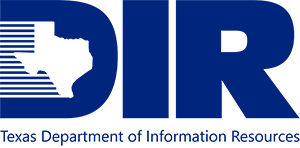Working with vendors can be a great way to boost efficiency, but choosing the right ones isn’t always easy. From identifying partners who can offer you the best solutions to choosing those whose workflow aligns with yours, it can be tough to know which vendors are a good fit—and which ones don’t make the cut.
This is especially true when it comes to turnover, an issue that can negatively impact a company’s success but which is frequently overlooked with vendors. The reason is simple: many companies don’t realize that it can affect them. Unfortunately, the reality is that vendor staffing can pose considerable challenges for clients, leading to a loss of productivity and added costs.
Here are some of the ways that turnover on vendor teams could affect your organization, and solutions for how to address it.
Significantly Delays Projects
One of the top problems associated with turnover is a lack of efficiency. Changes in staffing mean that projects frequently change hands and new team members must be brought up to speed on existing workflows. In turn, this can affect timelines and make it hard to meet your deadlines. And since new employees often need a minimum of two to three weeks to fully ramp up on a codebase, this can be disruptive if you’re working on tight turnarounds.
Depending on your vendor, these types of delays can be a major point of frustration and one of the best ways to tell it’s time to look for a new partner. While staffing changes do happen within organizations, if they become a persistent concern, they need to be addressed.
Affects Knowledge Sharing
Another negative aspect of turnover is that it can cause serious knowledge loss. This is because departing employees take their institutional and project-based knowledge with them, leaving existing employees and new team members struggling to fill in the gaps and find answers to client questions.
This impact is felt across all levels of the organization, and it can have a domino effect on everything from productivity to employee engagement. In fact, research shows that knowledge loss costs U.S. companies $4.5 million annually, and makes the onboarding of new employees less efficient.
When working with vendors, knowledge loss can manifest in a variety of ways including a lack of understanding of your core business needs and the necessary solutions you require. No matter how it presents, it’s likely to affect your day-to-day operations and cause additional work for your internal team.
Increases Costs
Costs are one of the key concerns associated with outsourcing, and staffing issues can have negative consequences in this respect as well. This is partly because of the loss of productivity caused by turnover, and partly because vendors pass along the burden of knowledge loss to their clients.
This is certainly true with technology vendors since the cost associated with replacing their employees is generally 100 to 150% of each employee’s salary. As a result, organizations are often left scrambling to stay on track with deadlines while also dealing with rising partner costs. While this is a troubling position to be in, it’s also a clear sign that it may be time to address staffing changes with your vendor in order to minimize their impact on your company.
Negatively Affects Customer Service
Another way that vendor turnover could affect your business is through a lack of customer service. This is often due to a shortage of staff, and it can cause considerable problems when dealing with complex or time-sensitive matters.
Here are a few questions to ask yourself when understanding the level of customer service you’re currently receiving:
- Is the vendor responsive to my questions and concerns?
- Are concerns handled quickly and efficiently?
- Do I have a consistent point of contact on the vendor’s team?
- Is the vendor communicative about any changes to their team or workflow?
If the answer to some or all of the questions is no, chances are that turnover on the vendor team is having an impact on your organization. This is a good time to assess your relationship with the vendor and decide whether it’s worth sticking with them or going in a new direction.
High turnover is a sign of systemic issues within an organization, and it needs to be addressed. If this is a consistent problem with one of your vendors, don’t be afraid to raise it with their leadership team. Explain your concerns and share any challenges you’re facing as a result. Whenever possible, ask questions about staffing upfront to minimize possible surprises down the line. If the vendor is unable or unwilling to solve the problem, it’s time to look for another vendor.
At Simpat, we’re proud of the culture we’ve built over the years, in part because of the low turnover rates we’ve experienced as a result. Named a 2020 “Best Place to Code” by Software Guru, we’ve been recognized for our culture, professional development, and infrastructure—attributes that have allowed us to build a world-class team and provide our customers with the highest level of service.
Because of the time and care we’ve taken in building our team, we’re well aware of the challenges clients can face when working with vendors who don’t have the right structure in place. For insights into how Simpat can help you find the best solutions for your organization, connect with us for a personalized consultation.
